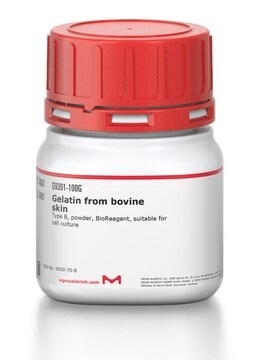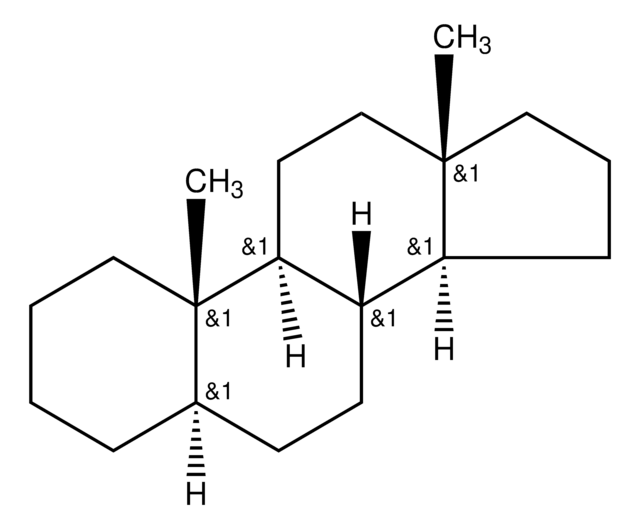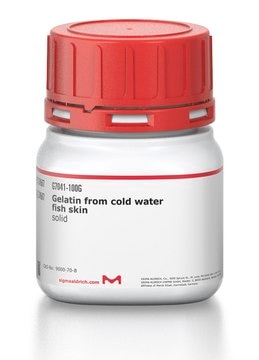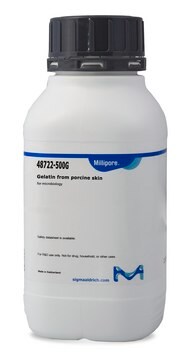Kluczowe dokumenty
04626
Hop-22(29)-ene solution
0.1 mg/mL in isooctane, analytical standard
Synonim(y):
Diploptene
About This Item
Polecane produkty
klasa czystości
analytical standard
Poziom jakości
okres trwałości
limited shelf life, expiry date on the label
stężenie
0.1 mg/mL in isooctane
100 μg/mL in isooctane
Zastosowanie
food and beverages
Format
single component solution
temp. przechowywania
−20°C
ciąg SMILES
[H][C@@]12CC[C@]3(C)[C@]([H])(CC[C@]4([H])[C@@]5(C)CCCC(C)(C)[C@]5([H])CC[C@@]34C)[C@@]1(C)CC[C@@H]2C(C)=C
InChI
1S/C30H50/c1-20(2)21-12-17-27(5)22(21)13-18-29(7)24(27)10-11-25-28(6)16-9-15-26(3,4)23(28)14-19-30(25,29)8/h21-25H,1,9-19H2,2-8H3/t21-,22+,23+,24-,25-,27+,28+,29-,30-/m1/s1
Klucz InChI
HHXYJYBYNZMZKX-PYQRSULMSA-N
Opis ogólny
Hasło ostrzegawcze
Danger
Zwroty wskazujące rodzaj zagrożenia
Zwroty wskazujące środki ostrożności
Klasyfikacja zagrożeń
Aquatic Acute 1 - Aquatic Chronic 1 - Asp. Tox. 1 - Flam. Liq. 2 - Skin Irrit. 2 - STOT SE 3
Organy docelowe
Central nervous system
Kod klasy składowania
3 - Flammable liquids
Klasa zagrożenia wodnego (WGK)
WGK 2
Temperatura zapłonu (°F)
10.4 °F - closed cup
Temperatura zapłonu (°C)
-12 °C - closed cup
Środki ochrony indywidualnej
Eyeshields, Faceshields, Gloves, type ABEK (EN14387) respirator filter
Wybierz jedną z najnowszych wersji:
Masz już ten produkt?
Dokumenty związane z niedawno zakupionymi produktami zostały zamieszczone w Bibliotece dokumentów.
Produkty
Our Fluka brand provides high-quality, relevant hopane reference standards to be used as biomarkers for petrochemical oil field remediation and spill analysis.
Nasz zespół naukowców ma doświadczenie we wszystkich obszarach badań, w tym w naukach przyrodniczych, materiałoznawstwie, syntezie chemicznej, chromatografii, analityce i wielu innych dziedzinach.
Skontaktuj się z zespołem ds. pomocy technicznej









